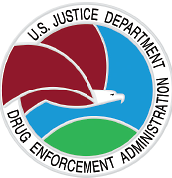DEA Tightens Restrictions on Hydrocodone Combinations
Abstract
With a 300 percent increase in overdose-related deaths paralleling the dramatic rise in prescriptions for opioid pain relievers, experts say that the new ruling to reschedule hydrocodone combination products was urgent.
The Drug Enforcement Administration (DEA) has ruled that as of October 6, hydrocodone combination products (HCPs) will no longer be classified as Schedule III drugs, but rather as Schedule II substances.

“This has been a long-awaited and very welcome change in rescheduling hydrocodone combination products,” said Petros Levounis, M.D., M.A., chair of psychiatry at Rutgers New Jersey Medical School. Levounis, a member of APA’s Council on Addiction Psychiatry, told Psychiatric News that the HCPs should have “always” been classified as Schedule II products for their high potential to be abused.
Under the Controlled Substances Act, drugs and other substances with accepted medical uses are placed into one of four schedules based on their abuse potential. Drugs with highest harm and abuse potential are placed in Schedule II, whereas substances with progressively less potential harm are placed in schedules III through V. Among Schedule II drugs are cocaine, methamphetamine, and methylphenidate. (Schedule I is reserved for controlled substances with no currently accepted medical use and lack of accepted safety for use, including heroin, LSD, and marijuana.)
HCPs are drugs that contain both hydrocodone, which by itself is categorized as a Schedule II drug, and specified amounts of other substances, such as acetaminophen or aspirin.
“The large amounts of acetaminophen in hydrocodone combination products gave the first impression that hydrocodone combination products were relatively safe drugs, which led the government to consider the drugs as Schedule III [in 1970]. Now we know, because of the high prevalence of prescription painkiller abuse and its associated deaths, that hydrocodone and high doses of acetaminophen can be very toxic to patients,” said Levounis.
The current analysis of HCPs by the DEA and the Department of Health and Human Services, which led to the final ruling issued August 21, showed that HCPs may lead to severe psychological or physical dependence and that adding nonnarcotic substances like acetaminophen to hydrocodone does not diminish its abuse potential.
Data leading up to the issuance of the rescheduling rule were gathered from studies conducted by both federal and private agencies, including the Monitoring the Future surveys, which showed that Vicodin, an HCP that is a Schedule III drug, was twice as likely to be used nonmedically by 12th graders from 2002 to 2011 than was OxyContin, a Schedule II substance.
“Almost 7 million Americans abuse controlled-substance prescription medications, including opioid painkillers, resulting in more deaths from prescription drug overdoses than auto accidents,” said DEA Administrator Michele Leonhart. “[The current] action recognizes that these products are some of the most addictive and potentially dangerous prescription medications available.”
Levounis agreed. “We live in the age in which prescription opioid abuse is an epidemic, and we should not let our guard down. We [as psychiatrists] applaud these efforts and partner with the federal government to continue our efforts to reduce prescription opioid addiction . . . and combat the calamities that have been associated with such addiction.” ■
The DEA’s final ruling is published in The Federal Register and can be accessed here.



